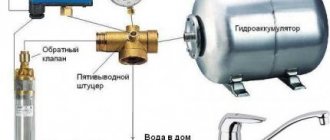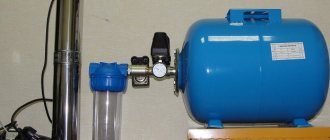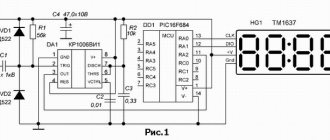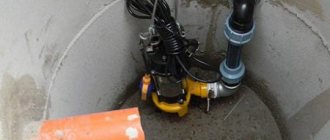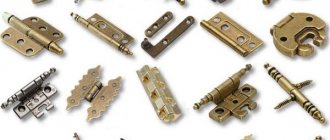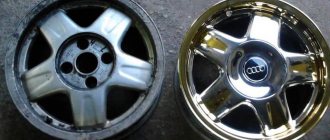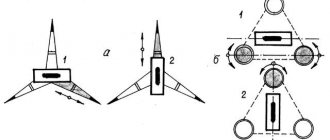How does an electronic tachometer work?
Speed sensors read the engine's crankshaft speed and generate electrical impulses that are converted into numbers in the tachometer. Unlike the traditional (analog) one, which is installed on many cars at the factory and uses a dial indicator, the electronic tachometer reflects the exact digital value of the crankshaft rotation speed. The measurement error of the device does not exceed 100 rpm, while for analog samples this figure can reach 500 rpm.
How to use the information
Having figured out what the tachometer in the car shows, drivers, as a rule, do not know how to proceed further and how to use the information received.
To begin with, it is worth remembering that the device indicates an acceptable time to start driving. This is convenient, especially for those who often travel by car in winter, since the device demonstrates the readiness of the “engine” for a trip. Most vehicles are unable to start moving when the engine is cold, so they start at maximum speed. Car enthusiasts just have to wait until the temperature of the refrigerant becomes normal. This will not happen with a tachometer. The driver is allowed to hit the road if the needle approaches 750-800 rpm.
Device
A car electronic tachometer consists of:
- digital display;
- microprocessor;
- microcircuits;
- control sensor on the idle air valve;
- counter (converter).
As already mentioned, the instrument readings are displayed on the display. The device is powered from the vehicle's on-board network with a voltage of 12 V, the current consumed is up to 120 mA.
Another advantage that a car electronic tachometer has over an analog one is the ability to combine various functions in one device:
- timer;
- alarm clock;
- odometer;
- voltage meter;
- contact closure angle meter (UOS) of a voltage breaker.
Before installation
Some car models (especially small ones) are not equipped with a tachometer as standard, so the owners of such models, more than others, need to receive important and objective information about engine operation. As a result, the car is equipped with an electronic tachometer. Car enthusiasts who are already accustomed to seeing a dial gauge on the dashboard can install a car electronic tachometer to obtain more accurate readings, implement additional functions or give the interior a more stylish look.
It is very important to note that electronic tachometers are offered for engines with different numbers of cylinders, which are indicated in its characteristics. When using the device in a vehicle with an engine with a different number of cylinders, there is a risk of receiving unreliable data.
When purchasing a car electronic tachometer, you need to familiarize yourself with its technical characteristics, and also check with the seller whether it is possible to install it on a specific car, since the reading algorithms for gasoline and diesel engines are different. There are also universal devices.
The installation method for an electronic tachometer depends on its size and design. You can fix it on top of the dashboard using double-sided tape, a bracket, or install it in a free space in the panel, perhaps instead of equipment (for example, a watch).
What is this?
A tachometer is a device located on the dashboard of a vehicle. It is installed not only in cars, but also on motorcycles and motor boats. The device was first created in 1903, when an American engineer built a cyclometer. The invention made it possible to calculate bicycle mileage. But what is a tachometer for in a car? The tachometer helps to monitor the operation of the engine, since there is a risk of engine damage when operating at high speeds.
Advantages of the device:
Helps extend the “life” of the engine.
Regulates the amount of fuel consumed.
The driver gets the opportunity to set the correct driving mode.
There is no shock effect on the transmission during gear shifting.
It turns out that the tachometer shows the car owner the best moment when to change gear. If the car has a manual transmission, then the device shows the moment of maximum load (the arrow “approaches” the red zone). The adjustment can be made while driving or at idle speed.
If the driver follows the indications, that is, starts and ends the movement within a given range of rotation of the crankshaft, then the engine resource will increase to the maximum.
In addition, the owner has the opportunity to independently diagnose the functioning of the motor. If the “engine” is working properly, then when it starts, the needle approaches 1000-1200 rpm, and after a couple of seconds drops to 600-800 rpm. A jumping arrow indicates that the motor is not operating properly.
Models of electronic tachometers
Helios 148/360/361/500
They have a standard appearance. Designed for use on cars with carburetor engines, number of cylinders from 1 to 16. Mounted on top of the instrument panel.
The advantages of this series are the low price, as well as the maximum range of additional functions - almost all of the above, as well as a car parking timer and alarm simulation. The stated measurement error of the devices is quite low: up to 5 rpm. The models of the line differ in the control scheme (one or two buttons), the number of display segments (3–5), and the ability to change the brightness of the indicator.
Multitronics
Multironics DD5/DM10/DM20 tachometers are less versatile. Of these, only the first model has a clock and timer, automatic adjustment of display brightness as additional functions, the rest have only a voltmeter. The measurement error is slightly higher - at 2000 rpm it is 10 rpm, and at high speeds it is up to 3%. DD5 is also different in that it can be used for a wide range of engines - with 2, 4, 5, 6 and 8 cylinders, both gasoline and diesel. DM10/DM20 are intended for four-cylinder petrol engines only. For diesel engines, models DM11/DM12/DM20D are offered. These tachometers are also secured with double-sided tape.
Amphiton-219/250
These models are distinguished by their impressive appearance and display with color zones depending on the engine load. They are intended only for carburetor four-cylinder engines. Additional functions include a voltmeter, a battery charge level meter and monitoring the operation of the voltage regulator. Amfiton-250 is also equipped with a timer and UZSK. These models are larger than previous ones. Another disadvantage of this series is the limited measurement range: 400 – 5990 rpm.
What does the tachometer measure in a car?
The purpose of the device allows you to use the resources of the car engine without consequences - that’s what the device is used for. The tachometer greatly helps reduce wear on engine parts. Each engine has individual technical characteristics that determine its final performance. These parameters depend on the maximum permissible torque and maximum power, adjusted for speed. A tachometer is a device for measuring the listed parameters.
Thus, the main function is to provide the driver with data on the basis of which the number of rotations can be monitored and the gear used (lower or higher) can be changed in a timely manner. This applies to vehicles with manual transmission.
Here are some examples of the usefulness of a tachometer:
- If the engine constantly operates at low speeds (up to 2000 rpm) , then fuel consumption will be low, but some problems may occur. If you abruptly engage a high gear, the internal combustion engine will begin to work under high load. The combustible mixture will not burn completely and as a result, carbon deposits will form on the cylinders, pistons and spark plugs. And when operating at low speeds, poor lubrication of the unit components with oil occurs, as a result of which their wear increases.
- If the engine constantly operates at high speeds (over 4000 rpm) , this will greatly increase gasoline consumption. The engine will overheat, its components will wear out faster, and the oil will quickly lose its performance properties.
In total, there are 3 zones of tachometer operation: green, yellow and red. If the rotation indicator is in the green zone, then the car will have weak dynamics. If the indicator is between the green and red zones, then the engine will consume more fuel, but the power will be maximum.
Attention! Understanding how your car's tachometer works can improve its productivity. Numerical indicators displayed on the display help the owner achieve better vehicle acceleration and traction with minimal fuel consumption.
The general principle of operation of the device is simple. It consists of recording the number of pulses coming from certain sensors. Such indicators are transformed through special mechanisms into individual values. In this case, the engine tachometer has only relative accuracy. For older devices it is conventional, reaching 500 rpm. Electronic devices read data with less error. A constant decrease in rotational power leads to increased fuel consumption and wear of internal combustion engine parts.
Connection – petrol engine
In the case of a gasoline engine, a car electronic tachometer is connected in the following order:
- The black contact wire must be connected to the vehicle ground.
- The red wire connects to the ignition switch terminal. Thus, when the ignition is turned on, a voltage of 12 V will be supplied to the device.
- The connection of the third wire, which may have different colors, depends on the type of ignition system on a particular vehicle. With a contact ignition system, the connection is made through a distributor-distributor. With a contactless system, the wire is connected to a voltage switch or to the terminal of the ignition coil.
- If the tachometer has a backlight, it is connected to the power wire for the side lights.
- If there is a voltmeter among the additional functions of the device, it has a separate wire that must be connected to the “plus” of the battery.
Why do you need a tachometer?
Despite the fact that many drivers do not attach importance to this device, in reality it plays an important role in car diagnostics.
Using a tachometer, you can easily identify vehicle malfunctions without leaving the cabin. The engine is in good condition and runs evenly, that is, at the same idle speed. If, when starting the engine, you notice that the speed changes sharply, this is a reason to check the engine, electronics, spark plugs, or find out how high-quality the fuel is in the tank. In addition, using a tachometer in a car allows the driver to obtain the most optimal traction force and, with timely gear shifts, to “catch” the best acceleration.
Is it necessary to purchase a tachometer and how to choose the right device?
The requirement to have a device for determining the angular velocity of the motor shaft is not regulated in regulations. The driver makes the decision independently, based on personal needs and financial capabilities. If you replace an old tachometer, you must select a new one taking into account the technical characteristics of the car.
If the car owner has decided to install the device, you should pay attention to the following manufacturers:
- Helios (Russia);
- Multitronics (Russia):
- CEM (China);
- KET Gauge (China - Taiwan).
Car tachometers use magnetic induction during the measurement process, which controls the pointer on the dial. They require periodic calibration and repair. The error when measuring using an analog device is 10% (500-600 vol.
/min). This type of device is more common; when driving a car, it is its readings that are more easily perceived by the eye.
A digital tachometer displays measurement data on an electronic display. There are digital tachometers that completely imitate the appearance of analog ones with arrows, but more often there are simple ones - with a digital panel. The error in measurements using them is 3-4%, which is much lower than that of analog equipment.
Indispensable when determining car economizer thresholds, or when adjusting interaction with electronic units. In short, accurate measurements cannot be made without this device.
By location, you can distinguish between a standard and remote tachometer. Standard models are so called because they are usually included in the set of vehicle devices. If the tachometer is pointer, then it is located next to the speedometer, and a digital tachometer is often attached to other devices.
It makes sense to purchase a remote one if the car is not equipped with a tachometer. Typically used in motorsports where precise control of engine speed is required.
